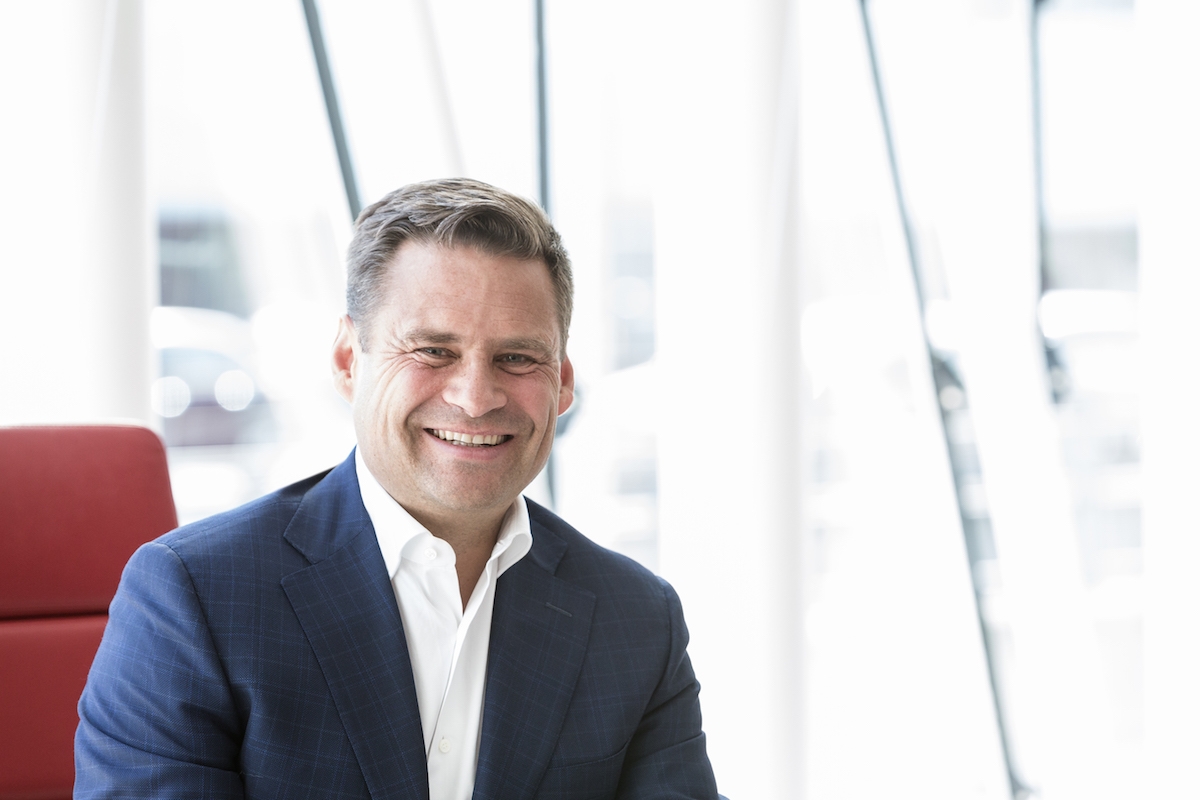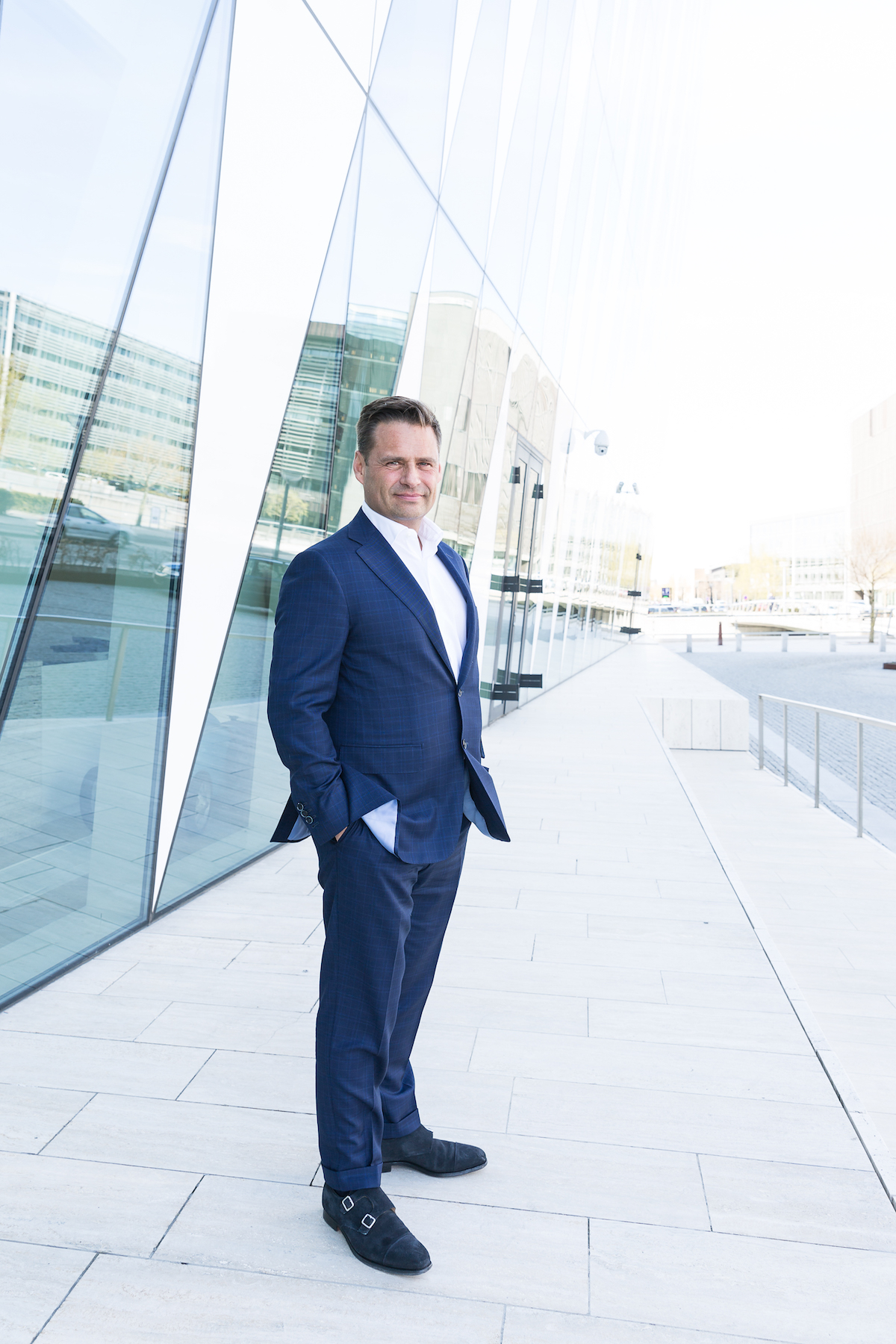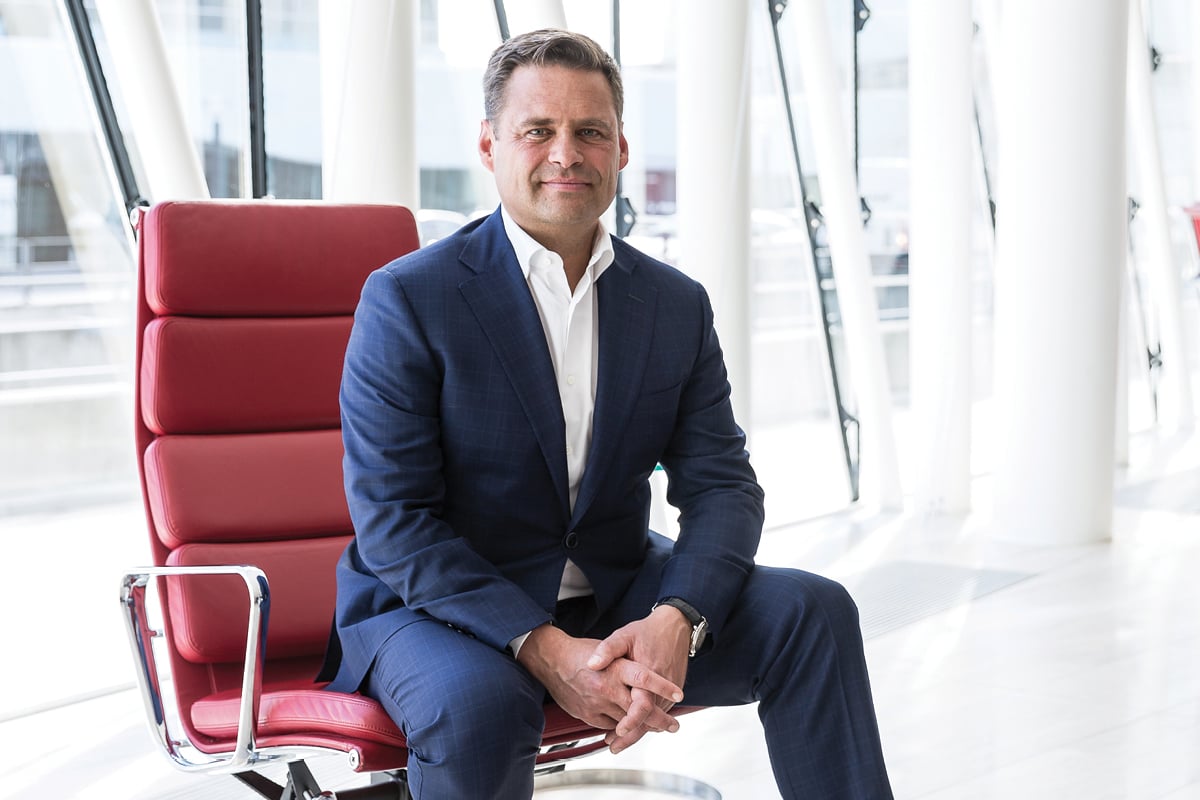According to Kim Fournais, co-founder and CEO of Danish firm Saxo Bank, it’s an exciting time to be in the finance industry. “With digitisation, changed consumer behaviour, technology, Big Data, artificial intelligence, different regulatory rules and so forth,” he comments, “it’s highly exciting. But I also think that not everyone understands what’s going on right now.”
That’s why Kim believes it’s essential to inform people about what’s happening in the finance industry and about what Saxo is doing to democratise investment and trading.
Kim Fournais pioneers forex fintech
Saxo was pioneering fintech before the term was even invented. When the company got its start in 1992 under the name Midas Fondsmæglerselskab, it was originally a phone-based brokerage service. But Kim and co-founder Lars Christensen quickly realised the potential of the internet.

“Our business is focused on using technology to provide traders, investors and our institutional partners with the best trading and investing tools and experience. We don’t have any physical, logistical issues, so it lends itself very well to digital transformation,” he explains. “In the 90s, we were already seeing, for example, e-trade in the US, but not for foreign exchange. We started employing IT guys in the mid-90s, and by 1998 we had our first foreign exchange spot platform.”
Since then, Saxo has added substantial global bank liquidity providers. It now offers SaxoTrader, a desktop platform for professional traders, and SaxoTraderGo, a cross-device platform for mobile investors and traders. With Saxo’s products, clients can trade equities, fixed-income products, commodities and foreign exchange, in terms of both cash products and derivative products. “And you can do all that from a mobile device,” says Kim. “You can do it from one account, one currency, one net asset value calculation, in real time, with whatever sub-accounts. You can really trade global markets at your fingertips.”
Saxo Bank takes a “Lego approach” to building a client experience
Saxo’s business model is to operate as facilitator, providing its clients with access to global markets and the investment tools they need. The firm uses one software stack to deliver services that cater to both traders and investors. “We’re from Denmark. Lego is Danish, and we have a Lego approach to building a client experience – what kind of products, what kind of packaging and so forth. But in the end, it’s one stack of technology that’s supporting all of Saxo,” says Kim.
Saxo’s powerful platform is multi-asset, multi-currency, multilingual, multi-jurisdictional, built with open API and catering to different client groups and partners. “In other words, we have one machine that can really run the global distances, both for ourselves and for our partners. We operate Saxo Bank in Denmark, but also our Swiss bank, the bank in France, the global licences in Singapore, Hong Kong, London, and all over the world.”
Through Saxo’s white-label partnerships, institutions around the world provide services to their clients under their own branding, but using the Danish firm’s platforms. Kim describes these partnerships as “win–win”. “Those companies and institutions already have a brand, a presence, a regulatory framework and clients. What they need is to provide better, more efficient digital services to their clients. But it makes no sense for each and every financial institution to build their own machine in the basement from legacy systems in a world where you have cloud and scalable solutions.”
Creating win–win solutions throughout the value chain
That’s where Saxo’s technology comes into play. White-label partners don’t have to build their own platforms – which is difficult and costly – but neither do they have to rely on old machines and processes. “That’s not going to service their clients. It costs too much money to maintain. It can’t scale. It produces errors, and it’s a very, very bad client experience,” explains Kim. Instead, partners can run their entire capital market experiences through Saxo’s technology stack.

“We can provide them with something that can transform their business and, if they move quickly, actually give them a market-leading position.” For Saxo, white-label partnerships build distribution and access to clients, and better distribution makes Saxo more attractive to liquidity providers. It already boasts over 120 white-label partnerships with a number of regional banks and financial institutions.
Furthermore, through its robo advisory platform, SaxoSelect, it’s tapping the fast-growing asset management space, with many collaborations already in place with firms such as BlackRock and Morningstar. “One of the big trends we see now is that partnerships and digital transformation need to go hand in hand for better client experience, while reducing cost and complexity,” says Kim. “That’s pretty powerful because this is a costly and complex industry with a massively growing regulatory pressure. Saxo is in a unique position to create a win–win situation throughout the value chain.”
“We’re one team of Saxonians – we have one true goal.”
There is one area, however, in which Kim admits Saxo has room for improvement. Although he’s confident the firm can compete on product price and customer service – “I honestly believe we’re first in class,” he says – he acknowledges that its digital marketing has been subpar. “We’re currently implementing a new global CMS.” The company is approaching this in the same way it approaches everything else.
“We’re asking, ‘How do we engage the clients? Do we tell our story? Do we have the right things to use? Do we support them digitally?’” explains Kim. He believes in running an efficient organisation, with clarity, focus and accountability. “If we can’t create ‘the Saxo experience’, we’re not going to succeed. We’re one team of Saxonians – we have one true goal. It’s about catering for our clients, traders and investors and wholesale clients, and then collaborating to constantly improve experience and efficiency.”
This digital journey is going to happen faster than many people think. You need to have the courage to challenge the status quo, remain alert to new opportunities for disruption, and continuously innovate to stay ahead of the pack.
While Kim does believe that traditional business traits are still important, he says that being adaptive to change is now the most crucial attribute, with the constant changes in technology, regulation and consumer behaviour. “You need good leadership, great people and good sales. You need to build your brand and your relationships. These things are always important to run a business,” allows Kim.
“But if you can’t change with the times in a top-notch way, and provide digital services compatible with a range of devices, I think your business will die. This digital journey is going to happen faster than many people think. You need to have the courage to challenge the status quo, remain alert to new opportunities for disruption, and continuously innovate to stay ahead of the pack. That’s been core to our success in democratising investment and trading and we’re not going to stop. We’re extremely passionate about what we do.”

